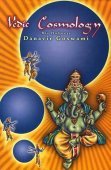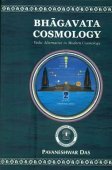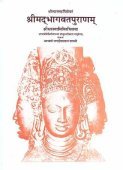Shishumara, Shimshumara, Shishu-mara, Śiśumāra: 18 definitions
Introduction:
Shishumara means something in Buddhism, Pali, Hinduism, Sanskrit. If you want to know the exact meaning, history, etymology or English translation of this term then check out the descriptions on this page. Add your comment or reference to a book if you want to contribute to this summary article.
The Sanskrit term Śiśumāra can be transliterated into English as Sisumara or Shishumara, using the IAST transliteration scheme (?).
In Hinduism
Ayurveda (science of life)
Agriculture (Krishi) and Vrikshayurveda (study of Plant life)
Source: Shodhganga: Drumavichitrikarnam—Plant mutagenesis in ancient IndiaŚiśumāra (शिशुमार) refers to the “Gangetic porpoise”, which is used in certain bio-organical recipes for plant mutagenesis, according to the Vṛkṣāyurveda by Sūrapāla (1000 CE): an encyclopedic work dealing with the study of trees and the principles of ancient Indian agriculture.—Accordingly, “If a seed is cultured in the oil of Alangium salviifolium, fish, Gangetic porpoise [e.g., Śiśumāra], human being, hog and crocodile and then dried up, sown in a good soil and nourished by coconut water (gale water?) the tree thereof produced flowers and fruits at once”.
Unclassified Ayurveda definitions
Source: Wisdom Library: Āyurveda and botanyŚiśumāra (शिशुमार) is a Sanskrit word referring to the animal “estuarine crocodile”. The meat of this animal is part of the māṃsavarga (‘group of flesh’), which is used throughout Ayurvedic literature. The animal Śiśumāra is part of the sub-group named Vāriśaya, refering to animals “living in waters”. It was classified by Caraka in his Carakasaṃhitā sūtrasthāna (chapter 27), a classical Ayurvedic work. Caraka defined such groups (vargas) based on the dietic properties of the substance.
Source: archive.org: Sushruta samhita, Volume IŚiśumāra (शिशुमार)—Sanskrit word for an animal “porpoise” (dolphin) or “crocodile” (Planista gangetica). This animal is from the group called Pādin (‘those which have feet’). Pādin itself is a sub-group of the group of animals known as Ānupa (those that frequent marshy places).

Āyurveda (आयुर्वेद, ayurveda) is a branch of Indian science dealing with medicine, herbalism, taxology, anatomy, surgery, alchemy and related topics. Traditional practice of Āyurveda in ancient India dates back to at least the first millenium BC. Literature is commonly written in Sanskrit using various poetic metres.
Purana and Itihasa (epic history)
Source: archive.org: Puranic Encyclopedia1) Śiśumāra (शिशुमार).—A Ṛṣi. This Ṛṣi used to live in water in the form of a crocodile. There is a story about him in the Pañcaviṃśa Brāhmaṇa.
Once all the Ṛṣis joined together in praising Indra. Śiśumāra alone remained silent without taking part in it. Seeing this, Devendra ordered Śiśumāra to praise him. The sage answered proudly that he had no time for it and that he would praise Indra for as much time as was needed to throw the water upwards.
Accordingly he started praising Indra. The sage to whom Indra’s praise was at first disagreeable, subsequently felt that he could not do it too much. By his austerity he acquired "Sāmavidyā". He even composed a "Sāma" (a hymn) in praise of Indra. In later times it became famous as "Śārkarasāma".
2) Śiśumāra (शिशुमार).—A constellation so called because it is in the form of a Śiśumāra (Crocodile). It is said to be the starry form of Viṣṇu. At the tail-end of it is Dhruva, which automatically rotates and also makes planets like the Sun and the moon to rotate. Stars follow the self-rotating Dhruva and rotate like a wheel. The Sun and the moon along with stars and planets are bound by the cord of atmosphere to Dhruva.
2) The basis and support of this constellation of Śiśumāra is Mahāviṣṇu, who is the support of all light and effulgence. Dhruva, son of Uttānapāda came to be installed at the tail-end of Śiśumāra as he had worshipped Viṣṇu. Śiśumāra is dependent upon Viṣṇu, the Lord of all, and Dhruva is dependent upon Śiśumāra. Sūrya is dependent on Dhruva. (Viṣṇu Purāṇa, Part 2, Chapter 9).
Source: archive.org: Shiva Purana - English TranslationŚiśumāra (शिशुमार) refers to “crocodiles”, according to the Śivapurāṇa 2.2.22. Accordingly as Śiva said to Sitā:—“[...] O my beloved, beautiful woman, clouds will not reach the place where I have to make an abode for you. [...] It [viz., the Himālayas] shines with ramparts of crystals, gold and silver. It is lustrous with the lakes—Mānasa and others. It abounds in buds and full-blown lotuses with golden stalks studded with gems. Crocodiles (śiśumāra), sharks and tortoises abound in the lakes”.
Source: Cologne Digital Sanskrit Dictionaries: The Purana Index1a) Śiśumāra (शिशुमार).—A Prajāpati; father of Bhrami and father-in-law of Dhruva.*
- * Bhāgavata-purāṇa IV. 10. 11.
1b) The form of the system of heavenly bodies supposed to be yoga power of Hari. At the end of the tail is Dhruva and on the tail are other gods like Indra, Agni, Kaśyapa; on its back lies the Ajavīthi and on the stomach the Ganges. Similarly all constellations and planets are seen on the different limbs of its body;1 described.2
- 1) Bhāgavata-purāṇa II. 2. 24; V. 23. 4-8; VI. 6. 14; Brahmāṇḍa-purāṇa I. 1. 85. II. 23. 99; Matsya-purāṇa 125. 5-9; 127. 19; Vāyu-purāṇa 1. 101; Viṣṇu-purāṇa II. 12. 29, 34.
- 2) Matsya-purāṇa 128. 19-25.
1c) Is Tārāmaya; the eternal deity; Uttānapāda is the upper jaw, Yajña is the lower lip, Dharma is the head, heart is Nārāyaṇa, Sādhya and Aśvins front feet, Varuṇa and Aryama is the hind feet, the samvatsara, child; Mitra is Apāna; tail is Agni, Mahendra, Marīci and Kaśyapa and Dhruva; all the planets are centred in Dhruva.*
- * Vāyu-purāṇa 52. 90-9; Viṣṇu-purāṇa II. 9. 23-4.

The Purana (पुराण, purāṇas) refers to Sanskrit literature preserving ancient India’s vast cultural history, including historical legends, religious ceremonies, various arts and sciences. The eighteen mahapuranas total over 400,000 shlokas (metrical couplets) and date to at least several centuries BCE.
Natyashastra (theatrics and dramaturgy)
Source: Shodhganga: Elements of Art and Architecture in the Trtiyakhanda of the Visnudharmottarapurana (natya)Śiśumāra (शिशुमार) refers to one of the various Sea-animals (makara) associated with Makarahasta: one of the thirteen Saṃyuktahastas or “combined hand gestures” (in Indian Dramas), according to the Viṣṇudharmottarapurāṇa, an ancient Sanskrit text which (being encyclopedic in nature) deals with a variety of cultural topics such as arts, architecture, music, grammar and astronomy.—The hasta-mudrās (lit. “hand-gestures”) are very essential to denote some particular action or state in dancing and these mudrās are formed with the help of hands and fingers.—According to the Śabdakalpadruma, makara means sea-animals [e.g., Śiśumāra, etc.]. According to the Viṣṇudharmottarapurāṇa, in makara posture both of the hands in patāka posture are placed one over the other and both should be facing downward. This posture is used in the acting of lion, tiger and deer.

Natyashastra (नाट्यशास्त्र, nāṭyaśāstra) refers to both the ancient Indian tradition (shastra) of performing arts, (natya—theatrics, drama, dance, music), as well as the name of a Sanskrit work dealing with these subjects. It also teaches the rules for composing Dramatic plays (nataka), construction and performance of Theater, and Poetic works (kavya).
General definition (in Hinduism)
Source: archive.org: Vedic index of Names and SubjectsŚiśumāra (शिशुमार) (see Śiṃśumara) is a term applied to Śarkara in the Pañcaviṃśa Brāhmaṇa (xiv. 5, 15), where he is called a Śiśumārarṣi, explained by the commentator to mean a Ṛṣi in the form of a Śiśumāra.
In Buddhism
Mahayana (major branch of Buddhism)
Source: De Gruyter: A Buddhist Ritual Manual on AgricultureŚiśumāra (शिशुमार) refers to the “alligators” (situated in the lotus-lake near Aḍakavatī), according to the Vajratuṇḍasamayakalparāja, an ancient Buddhist ritual manual on agriculture from the 5th-century (or earlier), containing various instructions for the Sangha to provide agriculture-related services to laypeople including rain-making, weather control and crop protection.—Accordingly, [when the Bhagavān reached the vicinity of the residence of Vaiśravaṇa], “[...] That lotus lake was covered by various blue lotuses, lotuses, white water-lilies and white lotuses. It contained various fish, Makaras, Timiṅgilas, alligators (śiśumāra), bees and various other water-born beings. [...]”

Mahayana (महायान, mahāyāna) is a major branch of Buddhism focusing on the path of a Bodhisattva (spiritual aspirants/ enlightened beings). Extant literature is vast and primarely composed in the Sanskrit language. There are many sūtras of which some of the earliest are the various Prajñāpāramitā sūtras.
Languages of India and abroad
Sanskrit dictionary
Source: DDSA: The practical Sanskrit-English dictionaryŚiśumāra (शिशुमार).—
1) the Gangetic porpoise.
2) a collection of stars held to be a form of Viṣṇu. °शिरस् (śiras) n. the north-east quarter; शिशुमार- शिरः प्राप्य न्यविशंस्ते स्म पार्थिवाः (śiśumāra- śiraḥ prāpya nyaviśaṃste sma pārthivāḥ) Mahābhārata (Bombay) 1.185.16.
Derivable forms: śiśumāraḥ (शिशुमारः).
Śiśumāra is a Sanskrit compound consisting of the terms śiśu and māra (मार).
Source: Cologne Digital Sanskrit Dictionaries: Shabda-Sagara Sanskrit-English DictionaryŚiśumāra (शिशुमार).—m.
(-raḥ) 1. The Gangetic porpoise, (Delphinus gangeticus.) 2. The heavenly porpoise, or collection of the stars and planets. 3. A name or form of Vishnu. E. śiśu child, and māra what kills.
Source: Cologne Digital Sanskrit Dictionaries: Benfey Sanskrit-English DictionaryŚiśumāra (शिशुमार).—m. 1. the Gangetic porpoise, [Pañcatantra] 51, 9. 2. the heavenly porpoise, or collection of the stars and planets; north-west, [Johnson's Selections from the Mahābhārata.] 40, 36. 3. a name of Viṣṇu.
Śiśumāra is a Sanskrit compound consisting of the terms śiśu and māra (मार).
Source: Cologne Digital Sanskrit Dictionaries: Cappeller Sanskrit-English DictionaryŚiśumāra (शिशुमार).—[masculine] the Gangetic porpoise (lit. childkilling) & a constellation conceived in the form of this animal and as an apparition of Viṣṇu.
Source: Cologne Digital Sanskrit Dictionaries: Monier-Williams Sanskrit-English Dictionary1) Śiśumāra (शिशुमार):—[=śiśu-māra] [from śiśu] m. ‘child-killer’, the Gangetic porpoise or dolphin, Delphinus Gangeticus, [Vājasaneyi-saṃhitā] etc. etc.
2) [v.s. ...] an alligator, [Suśruta]
3) [v.s. ...] a collection of stars supposed to resemble a dolphin (and held to be a form of Viṣṇu; also personified as a son of Doṣa and Śarvarī, or as father of Bhrami, wife of Dhruva), [Mahābhārata; Purāṇa]
Source: Cologne Digital Sanskrit Dictionaries: Yates Sanskrit-English DictionaryŚiśumāra (शिशुमार):—[śiśu-māra] (raḥ) 1. m. The gangetic or heavenly porpoise; Vishnu.
Source: DDSA: Paia-sadda-mahannavo; a comprehensive Prakrit Hindi dictionary (S)Śiśumāra (शिशुमार) in the Sanskrit language is related to the Prakrit word: Suṃsumāra.
[Sanskrit to German]
Sanskrit, also spelled संस्कृतम् (saṃskṛtam), is an ancient language of India commonly seen as the grandmother of the Indo-European language family (even English!). Closely allied with Prakrit and Pali, Sanskrit is more exhaustive in both grammar and terms and has the most extensive collection of literature in the world, greatly surpassing its sister-languages Greek and Latin.
Kannada-English dictionary
Source: Alar: Kannada-English corpusŚiṃśumāra (ಶಿಂಶುಮಾರ):—
1) [noun] the porpoise Delphinus gangeticus, an aquatic animal.
2) [noun] a small Northern constellation between Pegasus and Aquila; Delphinus.
--- OR ---
Śiśumāra (ಶಿಶುಮಾರ):—
1) [noun] the porpoise Delphinus gangeticus, an aquatic animal.
2) [noun] a small Northern constellation between Pegasus and Aquila; Delphinus.
Kannada is a Dravidian language (as opposed to the Indo-European language family) mainly spoken in the southwestern region of India.
See also (Relevant definitions)
Partial matches: Shishu, Maaraa, Mara, Cicu.
Starts with: Shimshumaraka, Shishumaragiri, Shishumarakriti, Shishumaramukha, Shishumaramukhi, Shishumarapura, Shishumararshi, Shishumarashiras, Shishumarataila, Shishumaravasa.
Query error!
Full-text (+32): Shishumaramukhi, Shimshumara, Shishumarashiras, Shumshumara, Shimshumarashanti, Shimshumarastava, Shishumaravasa, Shishumararshi, Saisumara, Bhramin, Shishumaramukha, Cicumaram, Nanashishumara, Shishumarataila, Shishumarakriti, Shimshumaracakra, Shishumari, Shimshumaraka, Shushumara, Kincumaram.
Relevant text
Search found 32 books and stories containing Shishumara, Shimshumara, Shishu-mara, Śiṃśumāra, Śiśu-māra, Sisu-mara, Śiśumāra, Sisumara; (plurals include: Shishumaras, Shimshumaras, maras, Śiṃśumāras, māras, Śiśumāras, Sisumaras). You can also click to the full overview containing English textual excerpts. Below are direct links for the most relevant articles:
Mundaka Upanishad (Madhva commentary) (by Srisa Chandra Vasu)
Vishnu Purana (by Horace Hayman Wilson)
Chapter IX - Planetary system, under the type of the Sisumara, or porpoise < [Book II]
Chapter XII - Description of the Moon (candra) < [Book II]
Chapter XIII - Posterity of Dhruva < [Book I]
Rig Veda (translation and commentary) (by H. H. Wilson)
Rig Veda 1.116.18 < [Sukta 116]
Vishnu Purana (Taylor) (by McComas Taylor)
Chapter 9 - The source of rain < [Book Two: The Word]
Chapter 12 - The moon and planets < [Book Two: The Word]
Brahma Purana (by G. P. Bhatt)
Devi Bhagavata Purana (by Swami Vijñanananda)
Related products



